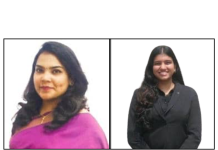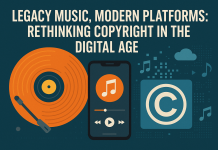We are pleased to bring to you our next guest post by Devangini Rai, a fourth year BA LLB student currently studying at University School of Law and Legal Studies, Guru Gobind Singh Indraprastha University, New Delhi.
On April 17, 2020, the NYU Journal of Intellectual Property and Entertainment Law published an article[i] carrying the details of how Pitbull’s famous yell, characterized as a sound of the nature ‘EEEEYOOOO!’ secured sound trademark registrations, thereby opening new doors for artists to reimagine brand building. In 2019, Pitbull’s iconic yell, also known as Grito was awarded two trademark registrations by the USPTO for sound recordings and live performances. It makes a record of probably the first sound registered by an artist for musical recordings and live performances as well as joining an elite club of sound trademarks. As per the USPTO Trademark Electronic Search System Database (TESS)[ii], their exist 234 active trademark sounds out of which a select 36 sounds are without any words, to which Pitbull’s yell also features a place as reported in the NYU JIPEL article.
The move to get Pitbull’s yell trademark began after a certain strikingly similar yell was used in the famous Columbian Track ‘Mi Gente’ in 2017 when a number of Pitbull fans began to wrongly attribute that sound as Pitbull’s own. The act of the singer getting his own sound trademarked is an example of celebrity rights gaining new frontiers of competitive brand building and the need to remain relevant in an industry that undergoes rapid changes.
As per the Lanham Act, a trademark is described as a visual representation of any word, device, symbol etc. or used in combination thereof such that to distinguish the good being represented in the usual course of commerce. The Trademark Law universally helps the proprietor of the mark to use it for distinguishing himself from others and maintain his/her goodwill. Sound marks, like smell and color marks come in the category of non-conventional trademarks which are different from the usual definition of a trademark in most statutes across the world. The US Trademark Manual of Examining Procedure recognises Sound Marks under Rule 1202.15[iii]. As per the rule, a sound mark distinguishing a product or service through audio will function as a ‘source indicator’ when it assumes a definitive shape characterized by certain association with the good.
In one of the earliest cases of 1978 US Trademark Trial and Appellate Board’s decision of re General Electric Broadcasting Company (199 U.S.P.Q. 560), the board observed that the mark need not be confined to a graphic form. The board focused on the acquired distinctiveness for a sound to qualify as a trademark. This aspect was again further enunciated in the 2005 ‘Duck Sound’ trademark case by a Pennsylvanian District Court in Ride the Ducks L.LC v Duck Boat Tours. The court pointed out the difference between fanciful trademarks which do not require a secondary meaning and particular proposed trademarks which require the proof of an acquired meaning. The above case involved a commonplace ‘quacking sound’ which was adjudged to have not acquired secondary meaning. Therefore, some sounds like MGM’s lion roar and the NY stock exchange bell did not require a proof of an acquired meaning whereas others like Apple’s Siri sound had to be proved.
Sound trademarks in India are not explicitly recognized under the Trademark Act. However, they are examined by the Registry as per the Trademark Rules, 2017 as well as the Draft Manual of Trademarks: Practice and Procedures. In the draft manual to be followed by the Controller, under Rule 12.2.5 in the Chapter II concerning ‘Examination of Applications for Registration of Trademark’, the rule stresses upon an acquired meaning translating into a distinctive effect on similar lines like the Lanham Act. Further under Chapter III concerning Post Examination, under Rule 3.2.4, sound trademarks are recognised as unconventional trademarks. The application for sound marks was earlier required to be accompanied by a graphical representation of the sound in musical notes. It mentions factual distinctiveness as a deciding factor in sound trademarks and mentions exceptions like chimes, nursery rhymes etc. After the introduction of the Trademark Rules 2017, in a move to embody digitization, an MP3 recording of 30 Seconds was mandated to accompany the graphical representation in the application of registration. India has previously given trademark registrations to sounds like Yahoo’s yodel, ICICI’s corporate jingle, Nokia’s guitar note, Britannia’s bell sound etc[iv].
What is striking in Pitbull’s case is that 1.) it is a sound made by the artist himself embedded in his songs, which has not been seen erstwhile, 2.) it can be mistaken as a common yell which may be used by many song producers, therefore raising the proof of secondary meaning significantly high, and 3.) as his lawyers make in their argument, his trademark can be classified as a ‘sound product’. It puts the question of how a yell satisfies the test of distinctiveness, an acquired secondary meaning and non-functionality. The categorization of Pitbull’s Grito as a sound product grants validity and efficacy to it being trademarked. Since a musical work in essence can secure a copyright over it, therefore, the singer’s yell, which is a regular feature in all his songs being trademarked is a unique proposition. This has the potential of other singers getting their particular singing styles trademarked with which the fans identify and connect with them.
Singers therefore getting their particular musical works getting trademarked will certainly point towards a new frontier in celebrity rights where a celebrity has to constantly be on the guard to protect their creations and products that possess economic significance and goodwill. A sound trademark of a particular sound in a song acts as a stamp with which singers recognize the artist singing. This can be easily misappropriated by other singers causing confusion in the minds of the fans. The granting of trademark thus, in Pitbull’s case heralds a new age for singers to get their branding campaigns stronger.
End Notes:
[i] https://jipel.law.nyu.edu/wp-content/uploads/2020/04/Kairalla_Article_FINAL.pdf
[ii] https://www.uspto.gov/trademarks-application-process/search-trademarkdatabase
[iii] https://tmep.uspto.gov/RDMS/TMEP/Oct2012#/Oct2012/TMEP-1200d1e2927.html
[iv] https://www.mondaq.com/india/trademark/603306/registering-sound-marks-in-india-trade-mark-rules-2017


















